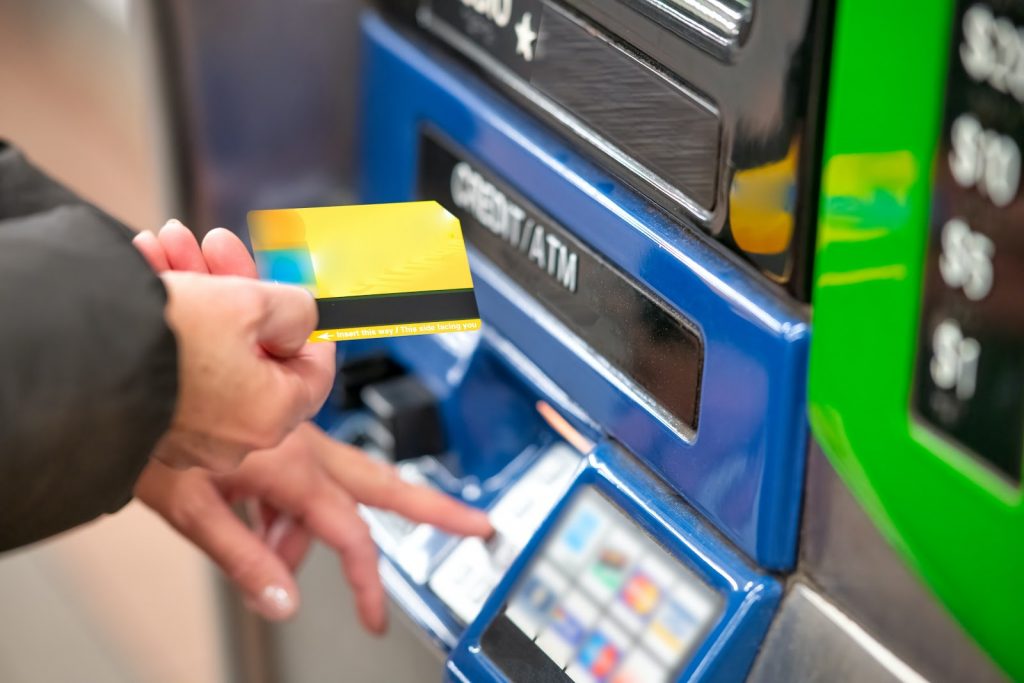Losing one’s credit card is a nightmare that many people would rather not have. It gets worse if you’re a business owner who needs that credit card to facilitate financial transactions and keep your business afloat every day.
One dreadful thing about losing your credit card is that if it was stolen, there’s every possibility that the lost credit card can be used to facilitate illegal transactions. Credit card fraud is fraudulent activity committed using credit cards, especially where a person seeks to divert funds from one account to another or to illegally purchase product/services using the stolen credit card. This fraud follows cases of stolen credit cards and usually occurs if the owner of the credit card doesn’t report the lost/stolen credit card early enough.
Because of how sensitive the issue of lost credit cards are, the government has put in place a provision to help mitigate illegal financial crimes committed by credit card thieves. According to the Federal Trade Commission, if your credit card is lost or stolen, federal law limits your liability for unauthorized charges. However, this protection is dependent on a few factors, including the type of card you lost and when you report the missing card.
In case you’ve lost your credit card (or said credit card got stolen), don’t panic. Follow the steps we would discuss below to prevent further financial damages.
What To Do if Your Credit Card Is Lost or Stolen
These steps should be taken immediately when you realize that your credit card is gone.
1. Don’t Panic
As a small business owner or an entrepreneur, this may be one of the most difficult pieces of advice you may hear today. It’s almost impossible not to get hysterical if you discover that your credit card is gone, especially if you use it for daily transactions or the money to run your business primarily comes from there.
You need a clear mind to go through the next steps. To prevent making worse mistakes along the line (mistakes that can get you in more financial trouble), take a few minutes to get yourself under control.
2. Contact Your Credit Card Issuer
There’s a reason why your credit card issuer allowed you to have their contact details. This is a very good time to pull out those records and use them for your own good.
Take a look at your credit card statement (if you have an electronic copy in your mail). The phone number of your credit card issuer should be provided there. Put a call across to them and let them in on what has happened to you.
Most likely, your credit card issuer (the bank) would cancel the stolen card immediately. This doesn’t mean that the credit account linked to that card has been invalidated or closed down. It just means that the card you reported to be missing has been deactivated and no one would be able to access the account with that card again.
Note, however, that if it was a case of misplacement (and you somehow find the missing credit card somewhere in your custody later on), you wouldn’t be able to use it again. Once canceled, the only option for accessing the funds in your credit account would be to request a new card from the credit issuer.
3. Report fraudulent activities which were carried out on the card.
Inasmuch as your card may be lost, you most likely still receive notifications about every transaction carried out with your credit card on your mobile device.
If this is the case, you may want to take out some time to go through your transaction history and figure out the transactions that weren’t initiated and completed by you. While reporting the case of the missing credit card to your issuer, they are likely to ask if you have noticed any fraudulent activities on the card.
Typically, your credit card issuer would initiate an investigation into your claims. The aim of this investigation is to determine if the claims you’ve made are genuine. If your card issuer determines that the activities you have reported were indeed fraudulent, they should issue provisional credit for the lost money. These provisional credits become permanent when your claims have been validated.
4. Change Your Login Information
Immediately after requesting for your credit card to be invalidated (or even before doing that), take out sometime to change your credit account’s login information.
At the point of a transaction with a stolen credit card, the fraudster would be required to enter some sensitive details, like your username and card pin, if they’re using a mobile app. Changing your login details, especially your credit card pin, immediately limits the chances that much damage would be done with the card you’ve lost.
While changing your security details, it’s best that you use completely new and unrelated passwords. For more protection, your new password shouldn’t be a derivative of the old one. In addition, ensure your new password can’t be easily guessed (like your birthday or the name of your favorite pet). Also, take some time to look through your other online accounts. If you have a merchant account (like Stripe), this would also be a great time to change your login details on those platforms as well.
5. Keep an Eye on Your Credit Account Statement
If you aren’t abreast of the activities going on with your credit account, you may end up missing out on fraudulent credit card activities. Your credit card issuer most likely has an active online portal, which allows you to access your credit card details at any time. This period is a very good time for you to keep an eye on what is going on with your credit account.
The Fair Credit Billing Act was put in place by the American Government to ensure fairness and equity toward credit collectors. It protects against fraudulent billing activities that may be carried out by credit account issuers or independent vendors. As far as this law is concerned, credit card holders are only required to pay a flat rate of $50 for unauthorized charges. What this implies is that if fraudulent activities on your credit card amount to more than $50 (maybe $200 or more), you are only required to pay a reimbursement fee of $50.
Many banks and credit account issuers, on the other hand, have a $0 unauthorized charge policy. This means that many financial institutions, after validating your claims of credit card fraud, wouldn’t charge you for unauthorized transactions if you reported the credit card theft/loss early enough.
In case your credit account issuer bills you more than is necessary for unauthorized charges, you have the legal right to request for your credit account transaction history to be reevaluated and the extra fees removed.
6. Request for a Comprehensive Credit Report from the Credit Bureaus
There are 3 major Credit Bureaus in America: Experian, Equifax, and TransUnion. They are responsible for keeping comprehensive track of all transactions carried out on credit cards. They are also vested with the responsibility of calculating and assigning credit scores to individuals.
The law mandates these credit bureaus to allow eligible American citizens to access their comprehensive credit account reports once every year. Apart from this, you can always request for your credit account statement from any of these Credit Bureaus at any time of the year.
When you have received the credit account reports (from all 3 bureaus), take out some time to examine what you have on them. Ensure that all reports tally and spot out unauthorized transactions that may have reflected in your credit report. If you can still see any questionable transactions, write to your credit account issuers and request that further investigations be made to clear the air.
At the same time, evaluate your credit score and make sure that your credit score tallies with what you should be expecting. If you have kept to your agreement with lenders and haven’t had a history of bad debts, you should expect a higher credit score. If, by any means, your credit report comes back with a low credit score, that may be a sign that you may have experienced credit card fraud at some point.
7. Do All You Can To Prevent Further Credit Card Loss
Soon enough, you’ll receive a new credit card (if you already requested for a new one after reporting the stolen one). It’s up to you to put some measures in place to prevent credit card loss in the future.
It’s almost impossible to prevent credit card loss and credit card fraud, by extension. But there are a few things you can do to ensure that you have very minimal cases of these fraudulent activities and credit card losses in future.
Some of them include:
- If you don’t need it, don’t take the card out of your house. If you know you wouldn’t use the card that day, why bring it along with you?
- If possible, don’t put your cards in a wallet. Wallets can go missing or easily stolen.
- Keep track of all cards you have, even old ones. Before throwing out old cards, ensure you break them up nicely (especially the places where your account number has been printed on the card).
- If you can, request for and use virtual cards. Virtual cards can’t be carried around, and this would greatly reduce the chances that you would lose them.
- An effective way to reduce credit card liabilities (and by extension, credit card fraud) on your business is to use credit card processors as much as possible. Credit card processors bridge the gap between your business and your customers’ credit card companies, allowing you to effortlessly accept credit card payments from them.
Traveling? Here’s some more tips for using your credit card while aboard: https://www.transferly.com/5-tips-for-using-credit-cards-while-traveling/.
Stripe card processor is an effective and reliable credit card processor that you can use for your business. It’s 100% online, easy to set up/use, and allows you to accept payments over a secure internet-based platform, which helps reduce instances of fraud.
To learn more about the financial intricacies of international money transfers, including the risks and strategies associated with currency fluctuations.




